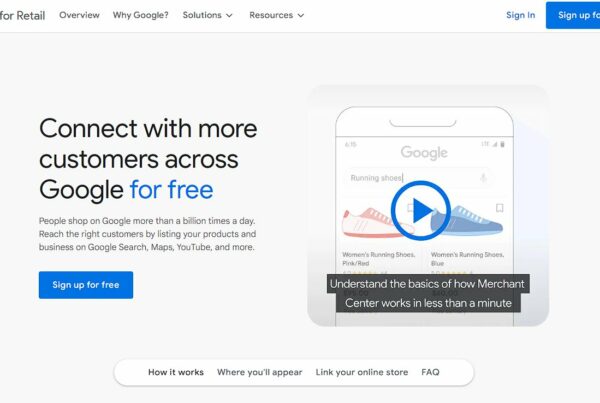Note: Although you will encounter many terms in Google Analytics vast reports, this glossary contains the most frequent metrics used. Additionally, the naming convention is fairly similar across most analytic platforms.
Channels
A Channel is the source of your traffic types. They can include:
Organic: Search Engine traffic. This is the result of your SEO efforts.
Direct: When users type your domain directly in their browser, this is considered direct traffic. IE – if you landed on my website by typing in https://syndicate.marketing instead of searching for it, or finding it in social media, your session on my website would be considered Direct Traffic.
Referral: Traffic that comes to your website by clicking on links found on other websites, this is considered Referral Traffic. IE – if you find and click on a link to my blog while on www.moz.com, your session would be considered Referral Traffic.
Social: Exactly as it sounds – anytime a user lands on your website via Social Media.
Affiliates: If you pay someone to put a link to your website on their website, this would be considered Affiliate Traffic. An affiliate marketing link is any link which you’ve incentivised your audience to link back to your site. For example, if you offer a referral program, any traffic generated via the referral program would be consiered Affiliate Traffic. This one is a little tricky since you’ll have to “tag” your affiliate links.
Display: If you run ads on an ad network such as Google Ad Network, your traffic generated from the display ads would be considered Display Traffic.
Paid: If you pay for search engine results, like a Google Adword campaign, traffic generated from these paid links would be considered Paid Traffic.
Other: Any traffic source that Google cannot identify is considered Other Traffic.
Acquisition Metrics
Users: A user is exactly as it sounds – a user! You are a user.
New Users: Google tracks the IP addresses coming to a website with their analytics installed. Any user with an IP address Google hasnt seen on the site before will be calculated as a new user. If a user comes to the website a million times they will only be counted as 1 new user.
Sessions: Once a user comes to your website it is counted as one session. Once they are dormant for over 30 minutes, the session is over. When the user returns to the site, Google will count the return as a second session. One user can have multiple sessions.
Entrances: From an SEO perspective Entrances show you that your content groupings are increasing the visibility of your site and the number of lead acquisition opportunities as well. The more entrances your content gets, the more opportunities your online business has to generate revenue. This metric is an outstanding key performance indicator for those writing content with the goal of increasing online visibility through organic SEO.
Engagement Metrics
Number of Sessions per User: As stated above, one user can have multiple sessions. This metric shows the average number of times a user comes back to your site.
Pageviews: When a user comes to your site this is counted as 1 page view. Each time a user clicks to a different page on your sitemap it is counted as a separate pageview. This metric shows the total number of individual pages all of your users have viewed.
Pages/Session: This is the average number of pages each user views when on your site during a session.
Avg Session Duration: The average amount of time a user spends on your site before becoming dormant for over 30 minutes.
Bounce Rate: When a user has an Entrance to a page or group of pages being tracked in your report the bounce rate will track the percentage of users who do not click through to any other page on your site. Simply speaking, the content was not what they expected so they hit the back button or exited your site without clicking around further. Google and other search engines do not like high bounce rates. High bounce rates show search engines that they aren’t doing their job, which is to give their users the results they are looking for. When this happens your rankings drop for the keyword your page was found through. You want a low bounce rate so that your rankings, entrances and lead acquisitions increase as well.
Unique Pageviews: Google Analytics will only count Unique Pageviews as 1 page view for 1 page per session – even if the user refreshes their page or navigates back to a page multiple times while active on your site. For instance, if a user is on your website and navigates to a page 4 times during their session, it will count as 4 pageviews, but only 1 unique pageview. For this reason, I like to count Unique Pageviews as a more pure form of the metric.
%Exit: This is exactly what it means – the percentage of users who exit your site from the page in the report displayed in Google Analytics.
Conversion Metrics
Note: In order to track conversion, you must first set up goals in your Google Analytics account. You, the administrator will define what these goals are and the value of a conversion. Learn more about goals here.
Conversion Rate or Eccommerce Conversion Rate: Percentage of traffic who complete a goal on your website.
Transactions: Total Aggregate number of transactions per session on your website
Revenue: Total actual revenue generated per session/channel. This is most relevant for e-commerce websites where a transaction takes place directly on the website.
Page Value: Page Value is the average value for a page that a user visited before landing on the goal page or completing an E-commerce transaction (or both). This value is intended to give you an idea of which page ( or group of pages ) in your site contributed more to your site’s revenue.
Goal Value: This is the estimated value of a channel (such as organic traffic from SEO, or paid traffic from PPC etc). This is calculated by the amount your goals are worth when setting up goals in your admin panel. Learn More.
If you do not find what you are looking for on this page you can see the entire motherload of Google Analytics terms here: Google Glossary





